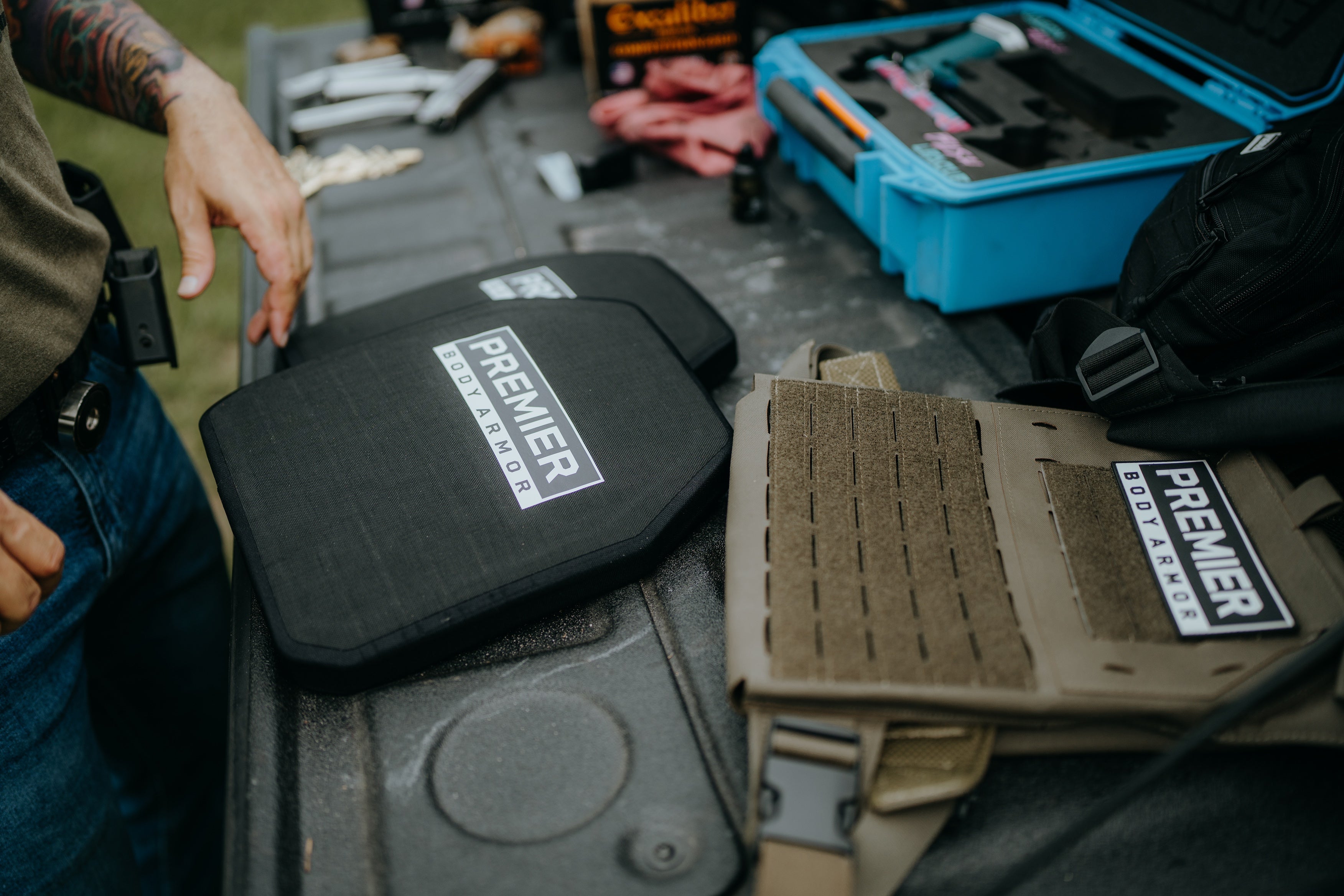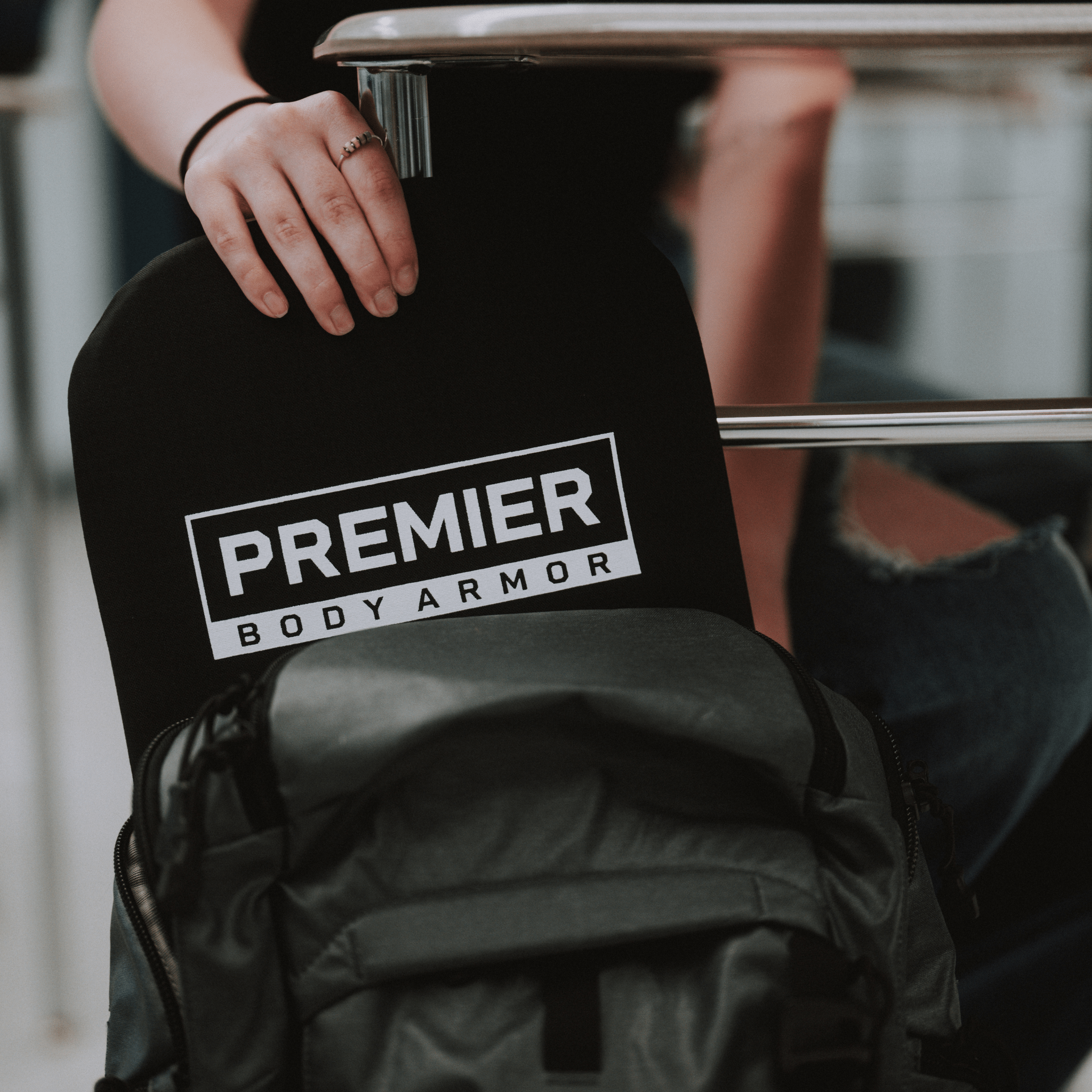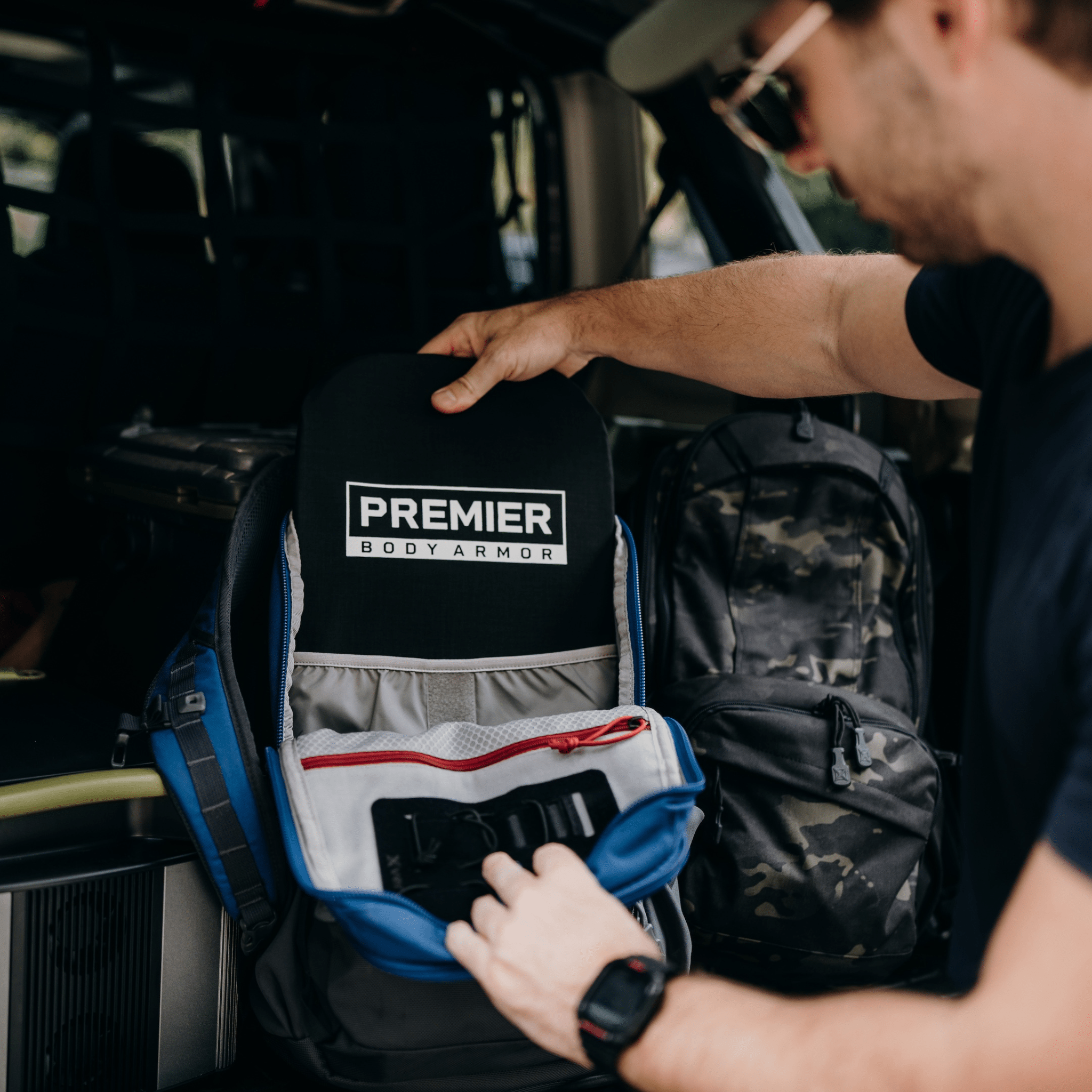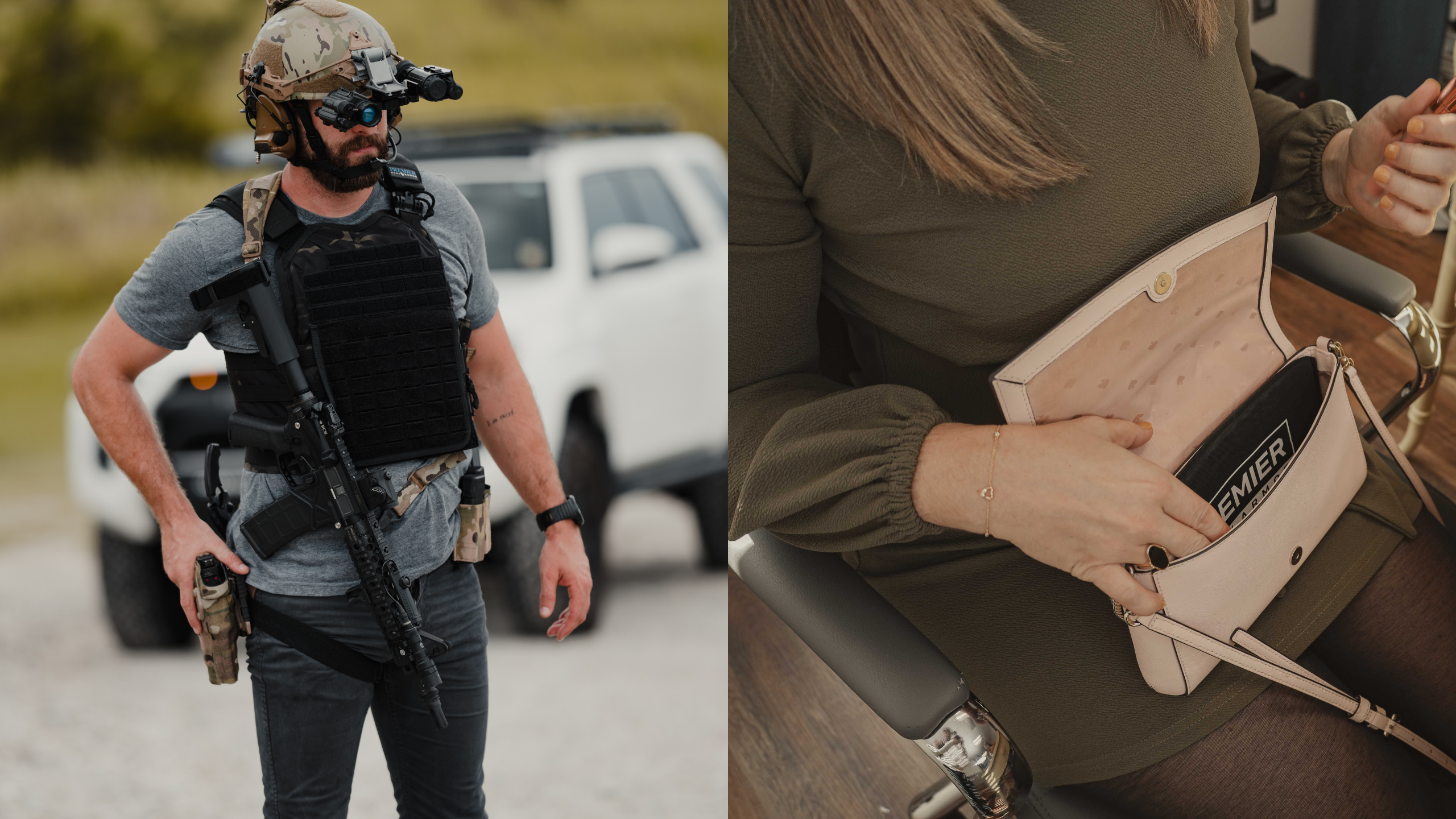Where and How to Wear Body Armor
Body armor is a safety device. It is meant to provide ballistic protection, absorbing a bullet or impact from other weapon, helping to save your life. We all know law enforcement, military and some outdoor enthusiasts wear body armor. And that makes sense, right? But what if you don’t fall into one of those categories?
If you’re anything like me (a relative novice when it comes to body armor) you may be asking yourself “well…where do I actually wear body armor?” It’s a common question. From mothers to professionals and beyond, many everyday civilians are beginning to buy body armor. Personally, for me it was to achieve some level of peace of mind and there’s nothing wrong with that, right?
Where Should I Wear Body Armor?
Personally, we believe everywhere to always be prepared, but for the sake of this blog, we'll break it down into a few main categories:
- Shooting Range
- Crowded and Public Spaces
- At School or At Work
- While Traveling
Can Anyone Buy or Wear Body Armor?
Law-abiding citizens in all 50 states are allowed to wear body armor. However, various states have different requirements and regulations when it comes to the process of purchasing and wearing body armor. You can read state rules and regulations with body armor here.
So, where are all the places you should wear body armor?
Shooting Range
We know, even if you’re not an experienced enthusiast this is an obvious one. But did you know a lot of people who go to the shooting range don’t wear body armor unless it’s required?

Why should I wear body armor at the shooting range?
You can familiarize yourself with how your body armor feels and affects your ability to utilize a weapon. Body armor should be incorporated in your defense training, know the ins and outs of your kit. Secondly, not everyone is experienced at shooting, there’s always the chance of an accident.
What type of body armor should I wear at the shooting range?
It is important to ensure you are comfortable in whatever type of body armor you decide to wear while practicing at a shooting range. Again, it may come down to what you’re training for. If it is for home defense, concealed carry, or with your EDC gear, then your armor should reflect it.

For instance, for concealed carry, you may practice with your Vertx Commuter Sling and armor bundle.
For home defense you may train with a home defense shield, or plate carrier. We would also recommend wearing a plate carrier if you’re training for combative shooting. For competition shooting, it may be our Concealable Armor Vest or Everyday Armor T-shirt. Something more lowkey, concealable, and soft armor.

Comfort and confidence are two major keys to ensuring a safe experience. We sell a variety of plate carriers and bullet proof vests ideal for such activities. You should also consider what type of weapon you intend to use. For example, higher powered rifles require an NIJ rating of Level III or above. You can check out our rifle rated armor plates here.
Can You Wear a Bulletproof Vest in Public?
It’s important to know that the chances of being involved in a mass shooting isn’t very likely. However situational awareness, which includes being prepared, is the first step to keeping you safe. Wearing a bulletproof vest in public may seem intimidating, but a low-profile, discreet, concealable vest is a legal and easy way to stay protected in public.
Why should I wear body armor in crowded and public spaces?
Public and crowded spaces are a target in the unlikely event of a violent crime. There is no need to avoid public spaces but being prepared can bring about a sense of peace of mind.

Most often, level IIIA armor is perfect for crowded and public spaces. Level 3a armor is soft armor that can easily be concealed on your body in the form of your vest, or off body carry like a ballistic armor backpack insert. If you're wondering can you wear a bulletproof vest in public, body armor is legal in all US states to law-abiding citizens. Soft armor like Level 3A vests and backpack inserts are even TSA approved.
What type of body armor should I wear in crowded and public spaces?
Most violent crimes involve smaller weapons such as handguns, so that means full tactical gear and higher threat level armor is not necessary in most cases. Soft body armor ballistic vests or off body carry solutions, like bulletproof laptop cases, are probably your best option here.

This type of armor is less bulky, more comfortable to wear, conceal, and utilize. You’ll want to look for armor that is rated at a minimum of Level II. You can find more information on NIJ rating levels here.
At School and At Work
This is one that no one wants to think about, but unfortunately schools and universities have become targets of violent crime. Again, while unlikely, being prepared for any type of violent crime is part of practicing good situational awareness.
Why should I wear body armor at school or work?
I am going to get a bit personal here. My son is in second grade. The reality of school shootings is a legitimate fear of many parents, even if the chances are low. I first came into the world of body armor when I purchased a backpack plate from Premier Body Armor for my son after what happened in Uvalde, Texas.

And, while I hope and pray it’s never used, knowing that it provides some level of protection for my son gives me a little bit of peace of mind. And it's not just for students. Teachers, who are our first line of defense in protecting our children, also should consider some type of body armor as well.
Work is also another good place to wear body armor. Just like at schools, while rare, there are incidences of violent crime in the workplace and body armor can help save your life and provide peace of mind.
What type of body armor should I wear at school or work?
Sending our kids to school in bulletproof vests or wearing tactical gear while teaching geometry isn’t exactly practical. But there are many types of body armor that can be utilized both practically and effectively.
Soft body armor such as our bulletproof binder covers, bulletproof pencil pouches, bulletproof laptop cases, and backpack inserts are all viable options to consider for school use. In fact, Premier has a whole section of their website dedicated to school safety armored solutions.

Should I Wear Body Armor While Traveling?
This is a common question. Depending on your comfort level, destination, or purpose for travel, having body armor with you is a good idea. You may be wondering can you travel with body armor?

Yes, you can. If you’re traveling domestically by car, you can carry body armor across state lines. However, if you’re traveling by air there are a few things to keep in mind:
- The United States Transportation Authority (TSA) does not allow you to wear body armor in the airport or on a plane, however you can carry it with you if it is packed away in a bag and not taken out.
- You are allowed to carry armored backpacks and inserts.
It is important to keep in mind that other countries might have different rules and regulations.
Things to Consider When Buying Body Armor
What works for one person, may not be the best fit for you. There are four main factors to consider when purchasing body armor – weight, threat level, type, and cost.
- Weight – hard plates make body armor heavier to carry and bulkier to wear, whereas soft plated armor is lighter and more practical for many civilians to wear. It is important that whichever body armor you buy fits and is comfortable and convenient to wear or use.
- Threat level – body armor comes in different ratings, known as NIJ ratings. Each level will provide protection against different caliber weapons. It is important to assess the situation you are most likely to find yourself in and then purchase accordingly.
- Type – in layperson’s terms, there are two types of body armor. That which you wear and that which you carry. Which you choose will depend greatly on the perceived threat and personal comfort.
- Cost – like everything, some body armor is more affordable than others. Rifle rated body armor tends to be more expensive, as it is required to withstand a greater caliber of weapon.
What Are the Different Types of Body Armor?
- Bulletproof Vest – Designed to be worn around the torso, bulletproof vests reduce and deflect the impact of a bullet. There are many different types of vests available, depending on the wearer's needs, whether it's for discreet protection under clothing or visible use in high-risk situations like law enforcement operations. Today, more civilians are also choosing to wear a bulletproof vest in public settings where they feel personal safety might be at risk, making concealability and comfort key factors to consider.


- Bulletproof Plate Carriers – Plate carriers are like bulletproof vests in that they are meant to be worn around the torso. The main difference is that the “bulletproof” in bulletproof plate carrier comes from removable plates that can be switched out when needed, providing for more flexibly to meet a variety of situations.


- Bulletproof Inserts - Instead of wearing a bulletproof vest or carrying a full bulletproof bag, bulletproof inserts are just that – you put them in any backpack or bag and use it as protection should the need arise. One of the benefits, for me anyway, is the innate ability to move them from one bag to another.

So, whether you’re planning to wear body armor for sporting or professional purposes or just looking for peace of mind, thanks to technological advancements in body armor there are many options available to meet your needs. And as always, if you have any questions feel free to contact us.











The claim about TSA is not correct, there is no law or regulation against wearing a bulletproof vest. (If such a law or regulation does exist please cite an actual provision of law or regulation.)
I wore body armor 5-6 days a week for 2 1/2 years while doing contracts in Iraq. You can get used to it even in the hottest weather. The trick is to make sure everything fits right and have a good, moisture-wicking undergarment. I’ve seen guys take a hit and walk away. One time one of the guys had his jacket nailed to his ceramic plate by an IED splinter. The stuff works.
Leave a comment